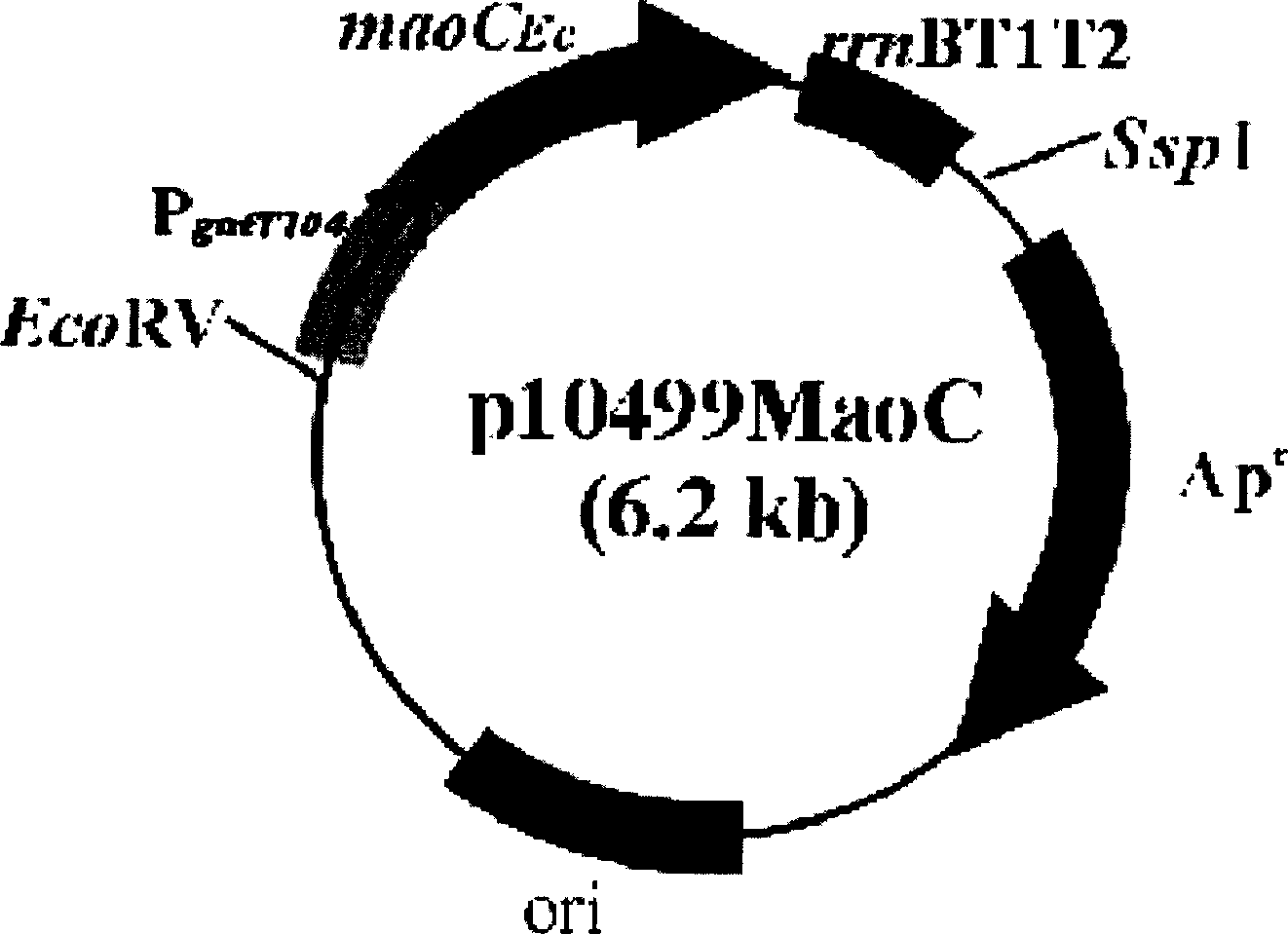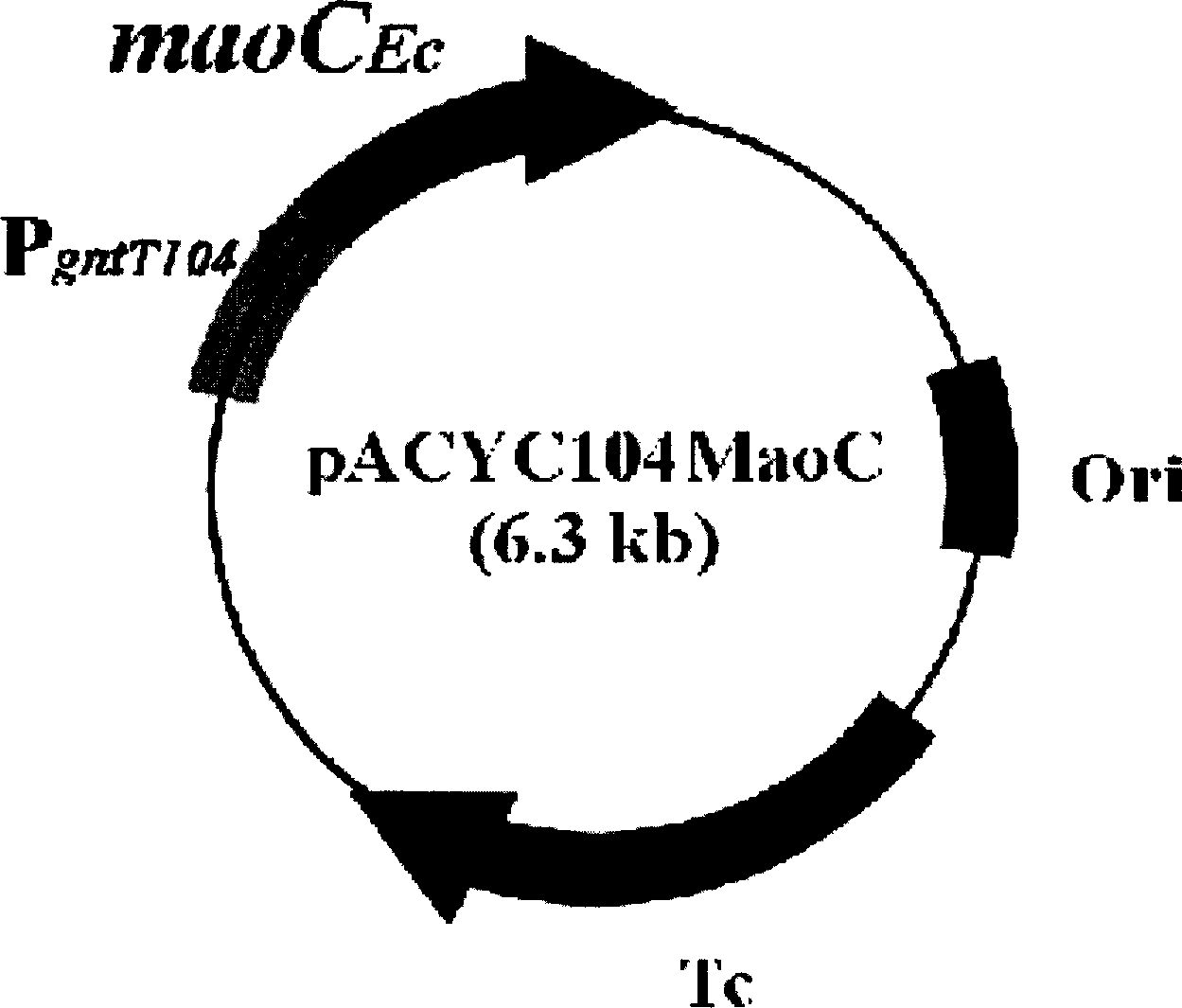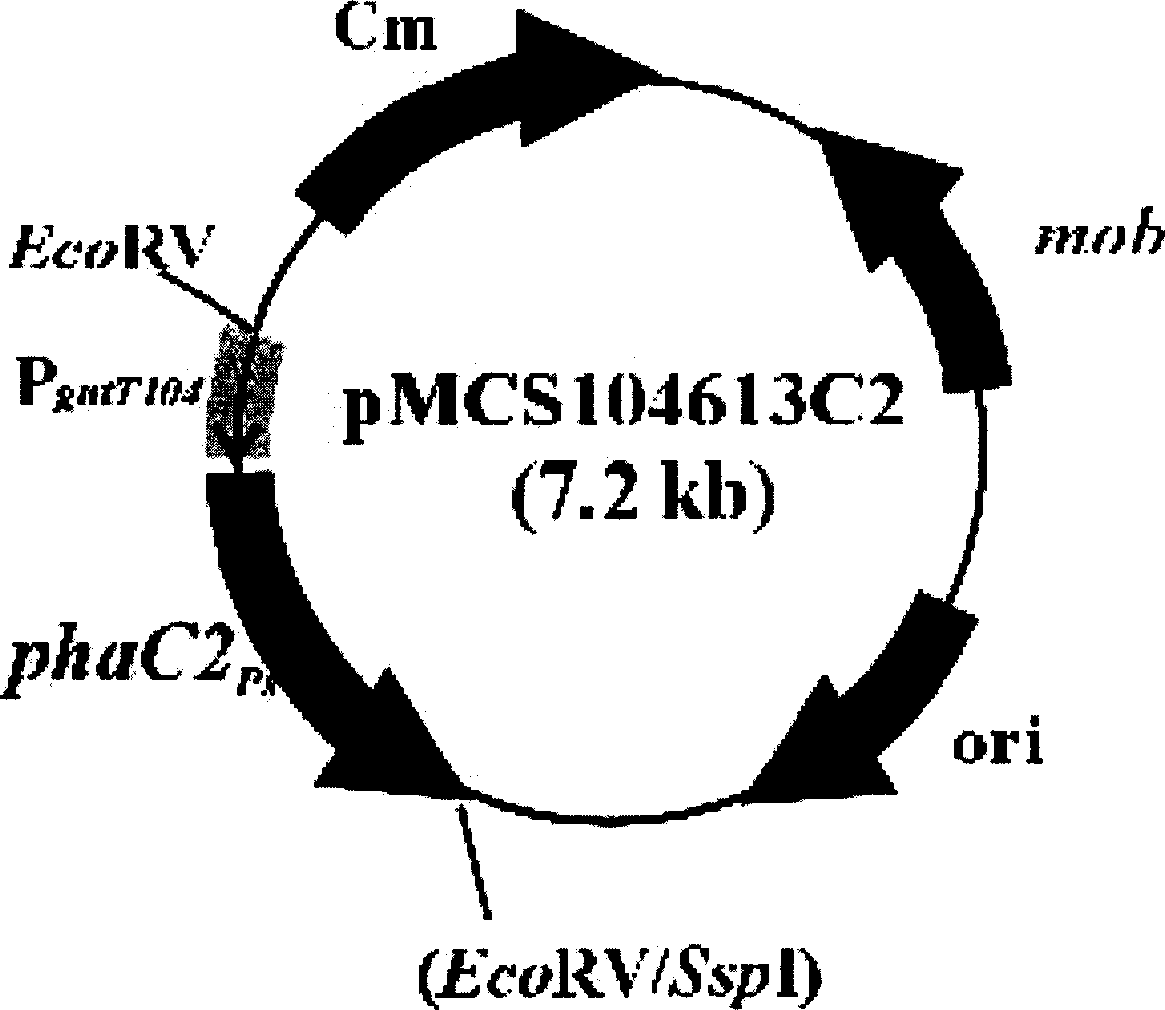Process for prepn. of polyhydroxy alkanoate by using maoC gene
A chain polyhydroxyalkanoate and gene technology, applied in the field of preparing PHA, can solve problems such as no results
- Summary
- Abstract
- Description
- Claims
- Application Information
AI Technical Summary
Problems solved by technology
Method used
Image
Examples
Embodiment 1
[0031] Example 1: Preparation of recombinant E.coli producing PHA with maoC gene
[0032] A mutant E.coli with deletion of fadB gene and maoC gene, a recombinant vector containing E.colimaoC gene, and a recombinant vector containing MCL-PHA synthetase gene were constructed. These recombinant vectors were used to produce recombinant E. coli for the production of MCL-PHA.
Embodiment 1-1
[0033] Example 1-1: Preparation of mutant E.coli with deletion of fadB gene and maoC gene
[0034] According to a conventional method, the maoC gene was removed from E. coli using the red operon of bacteriophage λ (Jeong and Lee, Appl. Environ. Microbiol., 68:4979-85, 2002).
[0035] In other words, the mutant E.coli WB101 with deletion of the fadB gene was transformed with the vector pTrcEBG containing the red operon of λ phage (Jeong and Lee, Appl. Environ. Microbiol., 68:4979-85, 2002), and 1 mM IPTG to induce the expression of the red operon in E.coliWB101 transformed with pTrcEBG, and this E.coli was used to prepare cells capable of electroporation. E. coli WB101 was obtained by removing the fadB gene from E. coli W3110 (KCTC 2223) (Park et al., Enzyme Micro. Technol., 33:62-70, 2003).
[0036] At the same time, since the 60 bp at the 5' end and 60 bp at the 3' end of the maoC gene contain DNA sequences similar to the 60 bp at the 5' end and 60 bp at the 3' end of the ...
Embodiment 1-2
[0038] Example 1-2: Construction of p10499A and p10499613C2
[0039] Chromosomal DNA (JCM 10015) of Pseudomonas sp.61-3 containing the PHA synthase gene (Matsusaki et al., J. Bacteriol., 180:6459-67, 1998) was used as a template, and the primer was phaC2 Ps -1 (SEQ ID NO: 5) and phaC2 Ps -2 (SEQ ID NO: 6) Performed 30 cycles of PCR including denaturation at 94°C for 50 seconds, annealing at 52°C for 50 seconds, and extension at 72°C for 2 minutes, thereby obtaining a PCR product. 5'-cgcggatccaataaggagatatctagatgagagagaaaccaacgccg-3' (SEQ ID NO: 5) 5'-cggatccccgggtaccgagctcgaattctcagcgcacgcgcacgtaggta-3' (SEQ ID NO: 6)
[0040] The PCR product was analyzed by agarose gel electrophoresis, and the 1.7 kb gene fragment corresponds to the phaC2Ps gene.
[0041] Then, amplify the gntT104 promoter to continue to express the PHA synthase gene, use the chromosomal gene of E.coliW3110 (ATCC 39936) as a template, and the primers are gntT104-1 (SEQ ID NO: 7) and gntT104-2 (SEQ ID NO: ...
PUM
 Login to View More
Login to View More Abstract
Description
Claims
Application Information
 Login to View More
Login to View More - R&D
- Intellectual Property
- Life Sciences
- Materials
- Tech Scout
- Unparalleled Data Quality
- Higher Quality Content
- 60% Fewer Hallucinations
Browse by: Latest US Patents, China's latest patents, Technical Efficacy Thesaurus, Application Domain, Technology Topic, Popular Technical Reports.
© 2025 PatSnap. All rights reserved.Legal|Privacy policy|Modern Slavery Act Transparency Statement|Sitemap|About US| Contact US: help@patsnap.com



